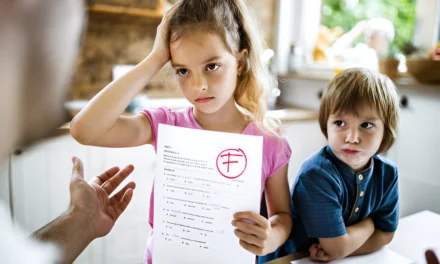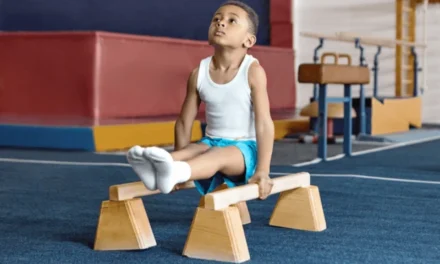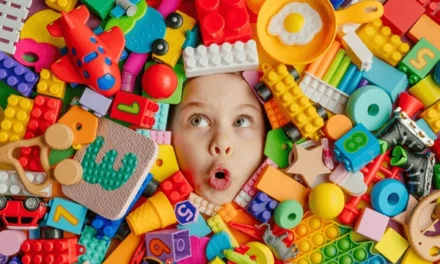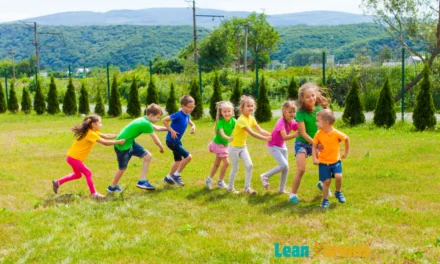Babies as young as 18 hours old can show empathy by responding to other babies in distress1. This shows that children are born with a natural ability to feel for others. It’s key to help them grow this important skill. Empathy lets us understand and share others’ feelings, which is vital for social and emotional growth.
As kids grow, empathy shapes their character, friendships, and future success2. Kids who are empathetic do well in school and social settings. They also become leaders among their peers2. This article will dive into the science of empathy, its development stages, and how parents can nurture it in their children.
Key Takeaways
- Empathy starts to develop in infancy, even in the first day or two of life.
- The bond between caregivers and babies is crucial for empathy and compassion later on.
- By ages six or seven, kids can understand others’ perspectives and help them.
- Empathy grows with experience, influenced by genetics, temperament, and environment.
- Empathetic kids excel in school, social life, and their careers.
Understanding Empathy: A Fundamental Life Skill
Empathy lets us understand and share others’ feelings. It’s key to emotional intelligence and social skills. It includes recognizing differences, naming emotions, and helping others feel better3. It’s both emotional and cognitive, with emotions coming first in kids.
Empathy is very important. It makes relationships stronger and more meaningful. It also reduces bullying and aggression, improving mental health3. Research shows it boosts personal and professional success, leading to better leadership and relationships.
The Core Components of Empathy
- Recognizing one’s distinctness from others
- Identifying and naming emotions
- Regulating emotional responses
- Perspective-taking
- Imagining how to help others feel better
How Empathy Shapes Social Interactions
Empathy is vital for healthy social interactions. It lets us understand others’ feelings and perspectives4. By seeing things from another’s point of view, we can respond with compassion and build stronger connections4.
It also helps in solving conflicts. Empathy leads to understanding and finding solutions that work for everyone.
The Role of Empathy in Emotional Intelligence
Emotional intelligence is closely linked to empathy5. People with high emotional intelligence can navigate social situations better. They make informed decisions and keep positive relationships.
Empathy is a core part of emotional intelligence. It helps us connect with others, fostering compassion and cooperation. This leads to emotional well-being.
| Empathy’s Impact on Social Interactions | Empathy’s Role in Emotional Intelligence |
|---|---|
|
|
“Empathy is the ability to step outside of your own experience and into the experience of another person.”
By growing empathy, we can understand ourselves and others better. This leads to more fulfilling relationships and a more harmonious society345.
The Science Behind Early Emotional Connections

Infants are born with a natural ability to feel empathy, thanks to mirror neurons. Babies as young as 18 hours old can sense when others are upset6. This shows how sensitive they are to emotions. The bond between babies and their caregivers is very strong. It makes them feel safe and calm.
This early bond is key for the development of empathy as kids grow up. By the age of 12 months, babies start to comfort others who are upset6. Between 14-18 months, they show they want to help6. As their brains grow, so does their ability to feel and show empathy.
| Key Findings on Empathy Development | Age Range |
|---|---|
| Infants start to comfort victims of distress | 12 months |
| Children demonstrate spontaneous helping behaviors | 14-18 months |
| Functional MRI studies indicate age-related changes in activation patterns and functional connectivity related to empathy development | Across childhood and adolescence |
Empathy is complex, involving many parts of the brain6. The amygdala, insula, and other areas work together. They help us understand and manage our emotions6. Studies on brain development give us clues about how empathy grows in children6.
Empathy is more than just brain activity. It also involves our body’s systems6. These systems help us feel and react to emotions. They are all connected, forming the basis of empathy.
Stages of Empathy Development in Children
Empathy is key for understanding and sharing feelings with others. It’s a skill that grows in stages during a child’s early years. Researchers say empathy starts in children aged 8 to, with basic levels showing up before they are two7. As kids get older, their empathy grows, helping them connect with others and understand emotions.
Infant Response to Others’ Emotions
Newborns may cry when they see others upset, showing they feel others’ feelings. This early response is the start of empathy.
Toddler Emotional Recognition
By 19 to 24 months, toddlers may look sad when someone else is upset. This is the first sign of empathy. By 24 to 36 months, they start to understand they are different from others, which helps them feel others’ emotions8.
School-Age Empathy Growth
Between 4 and 5 years old, kids start to see things from different perspectives. This helps them feel empathy more deeply8. As they grow, their empathy grows too, preparing them for life’s challenges.
Teaching kids empathy is vital for their social skills. Kids who feel empathy have better friendships and relationships. They also do well in school and help others8. Knowing how empathy grows helps parents and teachers support kids’ emotional growth.
| Empathy Development Stage | Age Range | Key Characteristics |
|---|---|---|
| Infant Response to Others’ Emotions | Newborn to 18 months | Reflexive crying and emotional contagion |
| Toddler Emotional Recognition | 19 months to 3 years | Showing concern for others, understanding self-distinction |
| School-Age Empathy Growth | 4 years and up | Perspective-taking, deeper cognitive and affective empathy |
Reading books with diverse faces and talking about feelings helps kids develop empathy8. Showing empathy, listening to kids, and playing pretend also helps8.
“Empathy is the most powerful tool we have to help others, to make the world a better place, and to find meaning in our lives.”
By knowing how empathy grows and using the right strategies, we can help kids develop this important skill. This sets them up for success in relationships and community contributions78.
The Impact of Secure Attachment on Empathy

The bond between parents and children in early years is key for empathy growth. Research shows that securely attached kids are more caring and popular by age 3 1/2. They are more likely to be chosen as friends compared to insecurely attached kids9.
As they get older, securely attached kids show more empathy and kindness. They have better friendships. On the other hand, avoidantly attached kids tend to be cruel and enjoy seeing others upset9.
Attachment security’s effect on empathy lasts into teens and adults. A big study found that empathy is linked to secure attachment and not to avoidant attachment10. Another study confirmed that secure attachment is positively linked to empathy11.
Parent-child interaction is vital for empathy growth. Kids show more empathy when their moms teach them to be compassionate. But, they show less empathy when moms use threats9. Kids with sensitive moms are more cooperative and self-controlled by age 29.
On the flip side, kids with attachment disorder struggle to trust and show love. They often act out anger through oppositional behaviors9. This highlights the need for secure attachment in early years to foster empathy and compassion.
Mirror Neurons and Their Role in Empathy Development
Neuroscience has uncovered the neural basis of empathy, a key part of child brain growth. Mirror neurons are at the heart of empathy and compassion. They fire when we act and when we see others act, showing the biological roots of empathy12.
This discovery has opened new paths to understanding empathy’s neural roots13.
How Brain Development Affects Empathy
As kids grow, their brains shape their empathetic skills12. The growth of executive function, especially in emotion regulation and perspective-taking, boosts their ability to connect with others12. This brain foundation helps kids understand and share others’ feelings, building compassion12.
The Connection Between Observation and Learning
Mirror neurons play a role in empathy and learning from observation13. They fire when we see an action, as if we’re doing it ourselves13. This helps us unconsciously imitate others, improving social connections and understanding12.
The study of empathy’s neuroscience shows mirror neurons’ key role in human connection12. As research on child brain development advances, we learn more about supporting empathy and social skills13.
“Mirror neurons fire in response to an observed action, regardless of whether the observer is performing the action or another individual is.”13
The discovery of mirror neurons has changed how we see empathy, moving beyond social psychology and philosophy13. Neuroscience has opened new ways to help kids develop empathy13.
As neuroscience grows, so will our understanding of mirror neurons in child brain development and empathy14.
Building Blocks of Emotional Understanding
Learning to understand emotions is key to empathy. Kids must first know their own feelings before they can see others’. This means learning to name emotions, reading facial cues, and linking feelings to experiences15.
Scientists have found that empathy is made up of seven parts in the brain. Five parts help us connect with others, and two help us understand social situations15. When we mimic others, our brains do the same, helping us feel connected15. Understanding others’ experiences based on their background is also part of empathy15.
Empathy takes effort to grasp others’ feelings, known as “empathic accuracy”15. It’s a brain activity that needs context to get it right15. Teaching kids to empathize helps them grow in understanding others15. And, empathy gets better with practice and humility15.
Empathy is a skill that helps us support others in tough times16. Theresa Wiseman’s 4 elements of empathy include not judging, seeing things from their view, knowing their feelings, and showing care16.
Empathy means not judging and being open to others, helping us support them emotionally16. Seeing things from another’s perspective helps us understand their life16. Naming someone’s emotions helps us connect with them16. Empathy is about caring for someone, not fixing their problems16. It’s about showing you care, making them feel seen and heard16.
Studies show emotional intelligence boosts school grades in young kids17. Teaching emotional intelligence helps kids get along better17. Learning to manage emotions is key for kids to make smart choices17.
Activities like role-playing and helping others teach empathy17. Knowing how to interact well is important for good relationships17. Making responsible choices keeps everyone safe17. Teaching emotional skills in school is vital for kids’ emotional growth17. Working together, teachers, parents, and speech therapists can help kids learn these skills17.
From Self-Awareness to Social Awareness
Understanding ourselves is the first step to understanding others. Children start by knowing their own feelings before they can see and feel others’. This growth includes learning that others have their own thoughts and feelings.
Understanding Personal Emotions
Knowing ourselves is key to feeling for others. As kids get better at feeling their own emotions, they can feel for others too. Sadly, empathy for those who are different has gone down since the 1970s18.
This drop in empathy has happened as tribalism and division have grown. People tend to feel more for those in their group and less for outsiders18.
Recognizing Others’ Feelings
Once kids know themselves, they can start to see how others feel. This is important for understanding and caring for others. Being aware of our own biases helps us be more empathetic and make better choices18.
Studies show that those who are good at feeling emotions have less stress and depression. Mindfulness and meditation can help us feel more connected to others19.
By helping kids understand themselves and others, we can build a more caring world. This is important for dealing with today’s complex issues18.
Since the 1970s, feeling for those who are different has gone down. This decline is linked to more division and tribalism. People now feel more for those in their group and less for outsiders19.
Knowing ourselves is key to understanding others. This is important for empathy and seeing different views. High emotional intelligence means less stress and better brain function19.
Practicing empathy and feeling for others can make us better at managing our emotions. This can lead to better mental health and happiness. Techniques like mindfulness and meditation can help us feel more connected to others.
The Role of Parents in Nurturing Empathy
As a parent, you are key in teaching your child empathy. Modeling empathetic behavior is a top teaching method20. Studies show empathetic kids do better socially, resist peer pressure, and are less aggressive20. Empathy helps kids understand and manage their feelings and those of others20.
Activities that build empathy are vital for good relationships and personal strength. It’s important to help your child name their feelings and talk about others’. This helps them develop empathy21.
Empathy has two parts: feeling and understanding. It’s about caring and seeing things from another’s view21. While most research focuses on negative empathy, responding to your child’s feelings is key for empathy growth.
- Encourage your child to talk about their feelings and the feelings of others.
- Model empathetic behavior by acknowledging and validating your child’s emotions.
- Engage your child in activities that foster caring and consideration for others, such as volunteering or helping with household chores.
Using parenting techniques that promote emotional coaching can boost your child’s empathy21. Empathy grows as kids get older, with most showing more concern for others21. An authoritative parenting style, with high responsiveness and control, helps develop empathy in children.
21 Studies have looked at how maternal warmth and reasoning affect empathy in kids21. A long-term study found a strong link between early parenting and adult empathy21. While warmth is important, it doesn’t explain all of child empathy.
“Empathy is the ability to understand and share the feelings of another.”
Your role in teaching empathy is vital. By showing empathy, encouraging feelings, and doing activities that promote caring, you help your child grow. This skill is essential for their social and emotional success.
Practical Strategies for Teaching Empathy
Teaching children to be empathetic is key for their social and emotional growth. There are many ways parents and teachers can help. Showing empathy yourself is a great way to teach kids to care and understand others22. Talking about feelings and doing activities to help others can also grow their empathy22.
Modeling Empathetic Behavior
Showing empathy yourself is a top way to teach it23. When you listen well, don’t judge too fast, and show you care, kids learn to be kind and understanding23. Also, taking a moment before reacting and not just feeling sorry for someone can make a classroom more caring23.
Daily Activities That Foster Empathy
Adding empathy-building activities to your day can really help kids grow24. Reading books, talking about feelings, and acting out scenarios can help kids see things from others’ points of view24. Mindfulness, keeping feelings journals, and working with school experts can also boost their emotional and empathy skills24.
| Empathy Exercises | Description |
|---|---|
| Reading Books Together | Connecting with characters’ feelings can teach empathy24. |
| Identifying Emotions in Photos | Seeing different emotions in others is key to empathy24. |
| Practicing Mindfulness | Understanding your own feelings can help you connect with others’ emotions24. |
| Playing Empathy Games | Games that make you think about how others feel can grow empathy24. |
By using these strategies every day, you can help kids understand and value empathy more24. Empathy is a basic skill that can make relationships stronger, improve emotional smarts, and make the world a kinder place2322.,
Common Challenges in Empathy Development
Teaching empathy to kids can be tricky. One big hurdle is emotional regulation. Research shows that emotional contagion, a basic form of, is rare in toddlers25. Older toddlers might stare when someone cries, but they don’t really feel the same way25. This highlights the importance of teachers and parents in helping toddlers develop empathy25.
Another challenge is social difficulties. Some toddlers don’t react empathetically, which means we can help them early25. They might stare at someone upset, but they don’t show they care25. In some cases, they might even be mean to their friends25.
It’s key to remember that empathy grows over time. Kids might not always show empathy right away. But, it’s vital because it helps them work together and get along with others25. Kids who don’t show empathy early might have trouble later on25.
| Challenge | Description | Potential Impact |
|---|---|---|
| Emotional Regulation | Difficulty in managing and expressing emotions, which can hinder empathetic responses. | Inconsistent empathetic behavior, difficulty in understanding and sharing others’ emotions. |
| Social Difficulties | Challenges in understanding and navigating social cues, interactions, and relationships. | Atypical empathic reactions, aggression towards peers, and difficulty in forming positive social connections. |
| Perspective-Taking | Struggle in understanding and considering others’ viewpoints and experiences. | Difficulty in recognizing and responding to the needs and feelings of others, leading to strained relationships. |
To beat these challenges, we need a variety of solutions. This includes special programs, help from parents, and a caring school environment25. By focusing on each child’s needs, we can help them grow in empathy and succeed in life.
The Connection Between Play and Empathy
Play is a key way to help kids develop empathy. Through games and role-playing, they learn to see things from others’ points of view. This helps them understand and share feelings, building important social skills26.
Role-Playing and Perspective Taking
Role-playing lets kids experience life from different angles. They act out various roles, learning to see things from others’ eyes. This helps them understand how others feel26.
By three, kids start playing more complex pretend games. They often play family roles, learning about social dynamics27. This safe space helps them practice empathy.
Cooperative Games and Social Learning
Cooperative games teach kids to work together. They learn to communicate and solve problems as a team26. This builds empathy and social skills.
Playing with others also helps kids develop confidence and communication skills26. It sets the stage for further empathy and social growth.
“Play allows children to practice understanding differences and learning from one another. Modeling feelings or reactions during play can help children learn empathy.”26
Long-term Benefits of Empathy in Children
Empathy is a key skill that helps children in many ways. Kids who are empathetic do well in school and with friends. They can work together better because they understand each other’s feelings28.
One school even went from an ‘F’ to an ‘A’ grade after focusing on empathy and kindness28. These students are seen as leaders because they know how to help others.
Empathy helps children grow emotionally and socially29. It’s a base for emotional intelligence and success in life29. Kids who are empathetic tend to be happier, better leaders, and have stronger relationships30.
Teaching empathy prepares kids for life’s challenges30. It helps them make friends, solve problems, and help their communities.
Empathy is a complex skill, but it’s very important28. Programs like Positive Action have shown a big drop in bullying, proving empathy’s value28. By teaching empathy, we help kids grow into compassionate, resilient adults.
Supporting Emotional Growth Through Stories
Stories are great for helping kids grow emotionally and understand others better. Storytelling and emotional literacy are closely linked. Reading together lets kids connect feelings with characters and situations. It also helps them see different viewpoints and experiences.
Talking about characters’ feelings and reasons can boost their emotional vocabulary. It also helps them see things from other people’s points of view.
Oral stories are a big part of how we communicate. Adding creative movement and sounds to stories makes them come alive for kids31. Songs like “Itsy Bitsy Spider” teach kids about perseverance and joy31.
The RedRover Readers program uses animal stories to teach kindness and relationships32. It asks kids to think about each character’s feelings and experiences. This helps them develop empathy and understand emotions better32.
- 94% of surveyed teachers said storytelling helps kids feel connected and included.31
- 100% of teachers agree that story songs are key for child development.31
Using animal stories in class can make learning fun. It teaches kids about movement, sounds, and feelings31. Stories have the power to help kids grow emotionally, develop empathy, and understand the world better.
“Stories are the heart and soul of what makes us human. They are how we understand ourselves and each other.” – Karly, overseer of the RedRover Readers program
Age-Appropriate Empathy Development Milestones
Empathy is a key skill that grows in stages in kids. Knowing these milestones helps parents and teachers support empathy. By six months, babies start noticing how others react33. Around two years old, toddlers understand that others have feelings too33. Between eighteen months and two years, they see themselves in mirrors, knowing they are separate33.
Early Childhood Markers
At three years old, kids connect their desires with emotions33. By four, they can see things from another’s point of view33. Around five, they learn to comfort others with the right words33.
Emotionally healthy five-year-olds talk about their feelings in detail33. Kids aged five to six start reading social cues33. They feel they belong in a community from about five years old33.
Elementary Age Expectations
From pre-K to age 6, kids recognize basic emotions and care about peers in trouble34. Ages 7-10, they understand more complex feelings and know how to support others34. They also mirror emotions they see, showing more complex feelings34.
Empathetic concern grows, making kids want to help or comfort others34.
FAQ
What are the core components of empathy?
How does empathy shape social interactions?
What is the role of empathy in emotional intelligence?
How do early emotional connections impact empathy development?
What are the stages of empathy development in children?
How does secure attachment influence empathy?
What is the role of mirror neurons in empathy development?
How do children develop emotional understanding?
What is the progression from self-awareness to social awareness in empathy development?
How can parents nurture empathy in their children?
What are practical strategies for teaching empathy?
What are common challenges in empathy development?
How does play contribute to empathy development?
What are the long-term benefits of empathy in children?
How can stories support emotional growth and empathy development?
What are the age-appropriate empathy development milestones?
Source Links
- How Children Develop Empathy
- When (and How) do Children Develop Empathy? | Psych Central
- Empathy: An Essential Life Skill
- Empathy and the Development of Affective Skills
- Empathy as a Life Skill: Cultivating Emotional Awareness in High School Students | Everyday Speech
- The Neurodevelopment of Empathy in Humans
- When Do Kids Develop Empathy?
- Empathy: What is it & when does a child develop it | Lovevery
- How Secure Attachment Fosters Empathy and Caring in Children – Evergreen Psychotherapy Center
- The Relationship between Empathy and Attachment in Children and Adolescents: Three-Level Meta-Analyses
- Attachment Style and Empathy in Late children, Adolescents, and Adults: Meta-analytic Review
- Are We Wired for Empathy?
- Empathy and the Role of Mirror Neurons
- Do Mirror Neurons Give Us Empathy?
- The Building Blocks of Empathy
- The Basic Building Blocks of Empathy – MSU Health4U
- Building Blocks of Emotional Intelligence: Nurturing Social Emotional Learning in Elementary Students | Everyday Speech
- Empathy and Self-Awareness
- Emotional Intelligence: Developing Self-Awareness and Empathy for Brain Health and Self-Improvement
- Nurturing Empathy in Children: The Foundation of Emotional Intelligence — Doing Good Together™
- The Influence of Parenting and Temperament on Empathy Development in Toddlers
- Key Strategies to Teach Children Empathy (Sorted by Age)
- 6 Steps To Cultivate Greater Empathy in Teaching
- 20+ Strategies for Teaching Empathy
- The typical and atypical development of empathy: How big is the gap from lab to field?
- Learning empathy through play | CedarWorks Playsets
- How to Teach Empathy Through Play
- Learn the Benefits of Empathy and Inclusivity in the Classroom
- “I feel how you feel…” The importance of helping your children to develop empathy
- Leading Kids: Is Empathy or Compassion Better?
- The Benefits of Storytelling: Help Kids Develop Social Emotional Learning — Yo Re Mi
- Promoting Empathy and Kindness through Books on Animals and More…
- Empathy Milestones: How Your Child Becomes More Empathetic
- Understanding Empathy Development Stages So You Know How Your Kids Are Doing – Kong Academy | Empowering Kids Through Play





